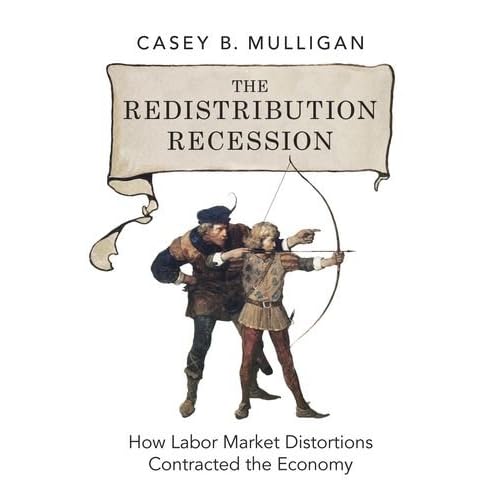Despite the fact that DeepenEnd This Depression Now! arrives at exactly the backwards conclusion, it has a number of highlights and interesting observations. First an editorial-free summary:
Chapter 1: There are lots of unemployed people and they are suffering. Unemployed people are hurting and are not happy.
Chapters 4 and 5: Because the mortgage mess was not exclusive to low-income borrowers, the mortgage crisis was primarily inequality gone wild. Government was not an independent force, except perhaps in lending a bit too much to low-income borrowers.
Chapter 6: All about economists, nothing about the economy
Chapter 7: The stimulus should have been bigger.
Chapter 8: The deficit is over-rated.
Chapter 9: He was right about inflation.
Chapter 10: About the euro and why European countries should have remained more independent
Chapter 11: “Austerity” has depressed economies, not expanded them.
Chapter 12: Spend like crazy, and the economy will fully and quickly rebound.
-----------
[editorial starts here]
Chapter 10 could stand by itself as a very nice mini book. One quibble: it could benefit by discussing what happens to unemployment benefits, from a household point of view, during a currency devaluation.
Chapters 4 and 5 arrive at many incorrect conclusions, but I totally agree that social scientists interested in just about any social change in the last thirty years have to look at growing inequality as one of the potentially key driving forces. That's the point of
my 2008 QJE paper (with Yona Rubinstein) about how growing inequality may be the single biggest factor transforming the women's labor market (transforming for the better, from the "progressive" point of view). That's also the point of Chapter 10 of
The Redistribution Recession. Growing inequality has produced some "bad" results too, and it's worth looking over Krugman's list.
I agree that the government budget
deficit gets way too much attention, and thereby distracts from the real issue (incentives faced by individuals and businesses). But after that basic insight, Chapters 7 and 8 are confused, and misleading. They engage in the usual trick of conceptual
flip-flopping between government purchases and government transfers to individuals, without ever noting the distinction and how different the economic effects of these are.
Those chapters claim that Democrats did not expand government spending, the recession did. When scoring the effect of Democrats on government spending, Krugman says, you have to exclude the "income security" components. But Chapter 3 of
The Redistribution Recession shows how safety net program spending grew primarily through legislation changes -- usually Democrats (esp. Obama and Pelosi) putting their signatures on new laws. Income security spending would have grown much less if the laws had been constant and the programs merely reacted to the growing number of unemployed. Krugman might say that the recession necessitated law changes, but then his claim becomes tautological: government expansion that Krugman deems as needed is not government expansion.
In a book dedicated by an economist to the unemployed, it is funny to find Chapter 6. Krugman is no expert on psychology, or the personal lives of economists. Even if he were, telling the truth about the economY creates enough enemies -- how does it help the unemployed to add to the enemy list with stereotypes of and personal attacks on economISTS? I could speculate, but I'm no psychology expert either ....
Krugman takes credit, largely deserved, in Chapter 9 for being basically right about inflation in the short and medium term. Does that qualify him as an expert on the labor market? What about as a predictor of the next Superbowl's winner? I doubt it.
The term “austerity” is too imprecise for my taste -- I'd like to see at least something about marginal tax rates and the distinction between purchases and transfers -- but I basically agree (see Q6
here) with Chapter 10's conclusion that austerity has failed to expand the economy.
Here are a couple of other memorable quotes from the book that are inspiring for Keynesians and non-Keynesians alike:
Chapter 5/page 85: “It is difficult to get a man to understand something, when his salary depends on his not understanding it.” (quoting Upton Sinclair)
Chapter 6/page 94: “there are valuable human activities which require the motive of moneymaking and the environment of private wealth-ownership for their full fruition” (quoting Keynes)
Chapter 8/page 146: “it follows that the level of debt matters only if the distribution of net worth matters, if highly indebted players face different constraints from players with low debt.”




